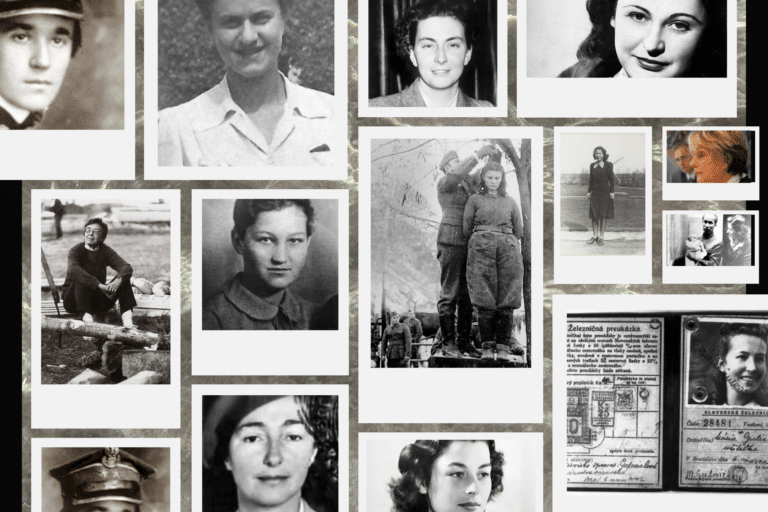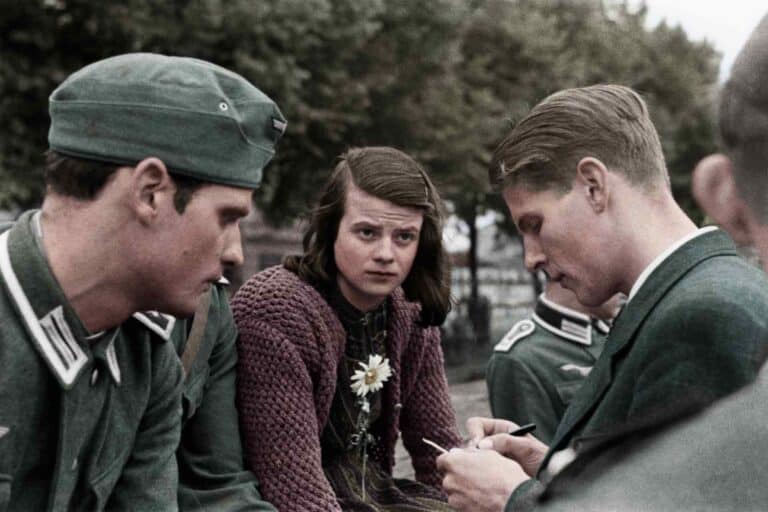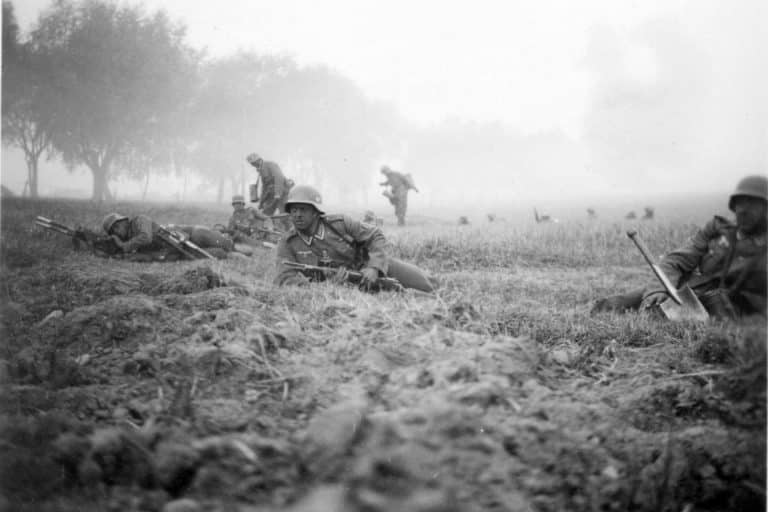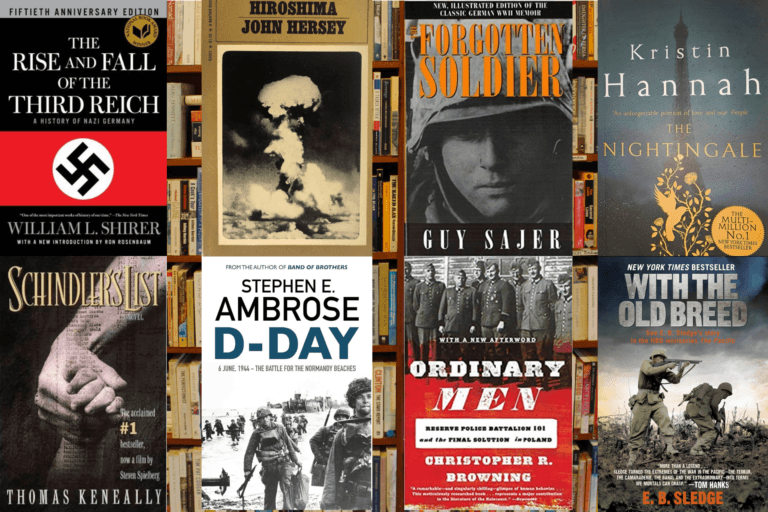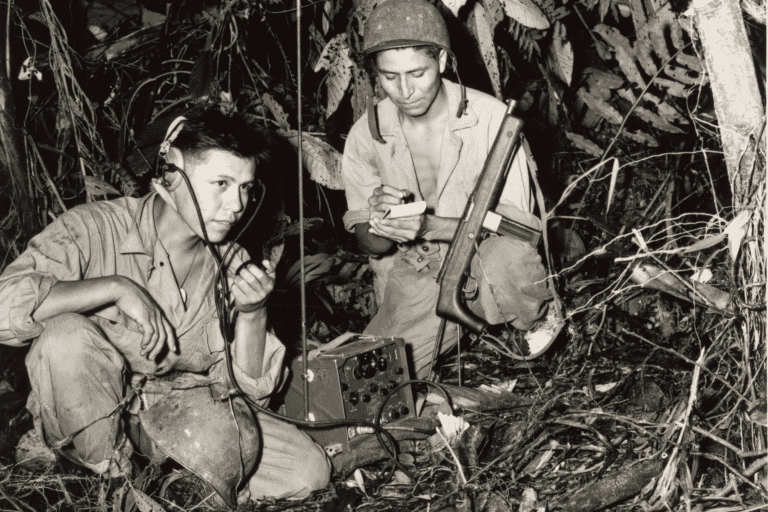Inside the Legendary Sniper Duels of Vasily Zaytsev
Vasily Zaytsev emerged as a symbol of resilience in the frozen ruins of Stalingrad during the brutal winter of 1942. As the city crumbled into a maze of rubble and shadow, traditional warfare gave way to a deadly contest of stealth and precision. Armed with a Mosin-Nagant rifle and instincts sharpened in the Ural Mountains, Zaytsev became one of the Red Army’s most feared snipers, reportedly eliminating over 200 German soldiers and shifting the momentum of the battle one shot at a time.
Zaytsev’s sniper duels became the stuff of legend, especially his alleged showdown with a top German marksman sent to eliminate him. These one-on-one battles elevated his reputation across the Soviet Union and the world. While the details of some encounters remain debated, the psychological impact of his presence was undeniable. Zaytsev didn’t just fight for ground—he fought for morale, proving that calm nerves and a steady hand could stand against the might of a modern army.
Who Was Vasily Zaytsev?
Vasily Grigoryevich Zaytsev was born on March 23, 1915, in the small village of Yeleninskoye, nestled in the Ural Mountains of Russia. Raised in a peasant family, he grew up surrounded by dense forests and wide-open terrain. From a young age, he learned to hunt with his grandfather, often stalking deer and wolves with just a single-shot rifle. This early experience sharpened his skills in patience, precision, and tracking—qualities that would later define his reputation.

A strong emphasis on survival and discipline marked Zaytsev’s upbringing. Life in rural Russia required self-reliance, and by adolescence, he had already developed a keen eye for marksmanship. His environment served as a natural training ground, where hunting was not just a tradition but a necessity. This early connection with nature and focus shaped his calm demeanor, even in high-stress situations.
Before the war, Vasily Zaytsev studied accounting and found employment as a clerk in the Soviet Navy. He worked in the administrative department of the Pacific Fleet, a far cry from the front lines. Yet even there, his disciplined character and background did not go unnoticed. As the conflict in Europe intensified, Zaytsev grew restless in his desk-bound role.
In 1942, he volunteered to transfer to a frontline unit. Leaving the safety of his office job behind, Zaytsev embraced the dangers of infantry life. His transition from a quiet naval clerk to a combat soldier was swift and decisive. This move marked a turning point in his life—one that would eventually transform him into one of World War II’s most revered snipers.
The Rise of the Soviet Sniper Corps
As the Eastern Front devolved into brutal urban warfare, the Soviet military quickly recognized the strategic value of snipers. In the close-quarters chaos of cities and ruined villages, traditional artillery and tank tactics lost their edge. Snipers, however, could immobilize enemy units, disrupt supply lines, and instill fear with a single, well-placed shot. These marksmen turned rubble-strewn streets and half-destroyed buildings into lethal vantage points, where patience and precision often determined survival.
Vasily Zaytsev rose to prominence during this critical phase of the war. Armed with a standard-issue Mosin-Nagant rifle, he racked up over 30 confirmed kills in a matter of days—long before his legendary duels captured headlines. His ability to remain hidden for hours and strike without warning made him a symbol of Soviet resistance. He targeted not just infantry but officers and machine gunners, effectively weakening German unit cohesion.
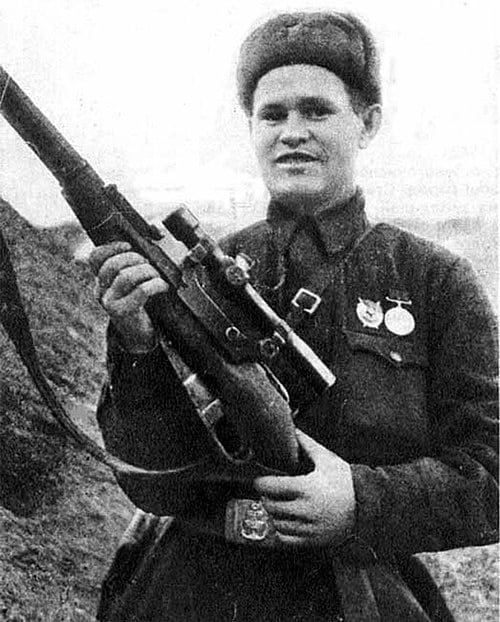
Recognizing the growing need for trained marksmen, Zaytsev proposed and helped establish a sniper training program within his unit. Drawing from his hunting background, he taught recruits how to read terrain, camouflage themselves, and work in pairs. His approach emphasized patience and discipline over aggression, which allowed even novice snipers to succeed in complex environments. Many of his students would go on to become deadly snipers in their own right.
Zaytsev believed that training others was as valuable as his battlefield performance. He stressed the importance of passing down techniques that could outlast any single soldier. His sniper school produced dozens of successful snipers, multiplying his impact far beyond what he could accomplish alone. In doing so, Zaytsev helped turn Soviet snipers into a defining force on the Eastern Front.
The sniper corps, under leaders such as Zaytsev, became a vital component in Soviet military strategy. Their work slowed enemy advances, protected key positions, and shifted the psychological tide. The rise of the sniper was not just a tactical evolution—it was a cultural one. Soviet propaganda celebrated snipers as heroes of the people, elevating them as symbols of discipline, patience, and lethal resolve.
Through Vasily Zaytsev’s mentorship and the institutionalization of sniper training, the Soviet Union built one of the most effective marksman forces of the war. What began as a necessity in ruined cities became a key element of Soviet battlefield doctrine—one that would endure well beyond World War II.
Stalingrad and Urban Warfare
By late 1942, the city of Stalingrad had become a brutal proving ground for modern urban warfare. What was once a thriving industrial center on the banks of the Volga River had turned into a shattered maze of crumbling buildings, twisted steel, and smoldering rubble. German forces under General Friedrich Paulus pushed hard to seize the city, but Soviet defenders, under General Vasily Chuikov, met them block by block. Streets changed hands daily. Snipers, more than any other soldier, thrived in this environment of chaos and concealment.
For Vasily Zaytsev, Stalingrad was both a battlefield and a hunting ground. The wreckage offered perfect cover for a sniper trained in patience and camouflage. Zaytsev used his natural hunting instincts—developed in the Ural Mountains—to move undetected through ruined factories and apartment buildings. He believed in using the terrain to his advantage, often crawling through sewers or hiding inside abandoned barrels. His sniper tactics earned him fame, but they also drew the attention of the German high command.

The Legendary Duel with Major Erwin König
The most famous sniper duel of World War II centers on Vasily Zaytsev and a German marksman known as Major Erwin König. According to Soviet sources, König was a high-ranking officer and the head of a sniper school in Berlin, dispatched to Stalingrad specifically to eliminate Zaytsev. While the name and rank of König are frequently cited in Soviet literature and Zaytsev’s memoir, no German records confirm his existence. This absence of documentation has led historians to debate whether König was a real person, a composite of multiple snipers, or a fabrication of Soviet propaganda.
In Zaytsev’s account, the duel lasted over three tense days amid the shattered ruins of Stalingrad. Both men were highly trained, with nerves of steel and an expert understanding of concealment. Zaytsev claimed he used a decoy helmet and coordinated with a spotter to bait König into revealing his position. After detecting the glint of light off König’s scope hidden beneath a metal plate, Zaytsev fired. The shot, he wrote, killed König instantly and ended the deadly game.
The duel wasn’t just a tactical victory—it became a symbolic triumph. In a battle defined by attrition, fear, and close-quarters chaos, the elimination of a supposed elite German sniper boosted morale among Soviet troops. Zaytsev became a legend not only for his skill but for representing the resilience of Soviet defenders. His memoir later framed the event as a pivotal moment, echoing the broader struggle of the Red Army against a powerful and methodical enemy.
Psychological warfare played a significant role in the duel. Each sniper had to anticipate the other’s moves without ever revealing their own. Long hours of waiting, decoys placed in rubble, and false movements to draw fire defined the encounter. It was less about speed than about endurance and deception—traits that Zaytsev had honed since his hunting days in the Urals.

Despite ongoing debate over König’s identity, the story’s persistence speaks to its mythic power. Soviet media amplified it during and after the war, and it eventually found its way into popular culture through books and films like Enemy at the Gates. Whether historical fact or legend rooted in truth, the duel embodies the gritty intensity of Stalingrad and the sniper’s unique role in shaping that fight.
Ultimately, the story of Vasily Zaytsev versus König endures because it transcends the battlefield, leaving a lasting legacy. It’s a tale of two warriors locked in a silent contest, where patience, skill, and the will to survive mattered more than numbers or firepower. In that frozen city of shadows, it was one bullet that made the difference—and one name that would be remembered.
Other Notable Duels and Urban Tactics
While the duel with Major Erwin König is the most famous, Vasily Zaytsev faced many other skilled enemy snipers during the brutal street fighting of Stalingrad. These engagements tested not just his accuracy, but also his patience and situational awareness. Zaytsev recorded over 200 confirmed kills, many of which were against trained marksmen sent by the Germans to counter the growing Soviet sniper threat. Each battle unfolded differently—some over minutes, others across several days of silent stalking through rubble and smoke.
To maximize effectiveness, Zaytsev helped organize sniper teams known as “sixes.” These groups consisted of three soldiers: two spotters and one shooter. The spotters would monitor movement, calculate distances, and provide distractions if needed, while the sniper remained focused on the target. This team-based method proved especially useful in the chaotic environment of Stalingrad, where visibility was limited and danger could come from any direction. The success of this system eventually influenced broader Red Army sniper training methods.
Stalingrad’s terrain was tailor-made for snipers. Buildings reduced to skeletons by artillery fire became hunting grounds filled with shadow and cover. Vasily Zaytsev operated from strategic points, such as the grain elevator —a massive structure that overlooked key supply routes. He also fought near the Red October factory, where twisted steel and debris offered both obstacles and concealment. These landmarks became symbolic battlegrounds where every window or crack could hide a rifle.
Vasily Zaytsev and his teams often moved between hiding spots under the cover of darkness. They set up traps, such as fake sniper nests, to draw fire and expose enemy shooters. Urban warfare allowed for such deception, as the battlefield was constantly shifting. In one instance, Zaytsev reported crawling across a battlefield covered in corpses to reach a better position, highlighting the grim and personal nature of sniper warfare in the city.
One reason Zaytsev’s methods were so effective was his ability to anticipate the psychology of his opponents. He knew that enemy snipers often mirrored Soviet tactics, so he would deliberately alter his patterns and angles to throw them off. He rotated firing positions, disguised his movements with debris, and exploited the smallest architectural features—like broken staircases or collapsed walls—to mask his approach.
Vasily Zaytsev’s legacy includes more than just his own kills. His urban tactics and team formations laid the groundwork for future Soviet sniper doctrine. By treating every corner of Stalingrad as a battlefield and every engagement as a chess match, Zaytsev turned a crumbling city into a proving ground for one of the deadliest forms of modern warfare.
Myth vs. Reality
Soviet propaganda during World War II played a powerful role in shaping Vasily Zaytsev’s legacy. His story was widely circulated in newspapers and radio broadcasts as an example of Soviet courage and resilience. The duel with König became a symbol of Soviet superiority, showing how one man’s bravery could defeat Nazi precision. It reinforced the narrative of the Soviet everyman standing firm against a more technologically advanced invader. In this light, the story served more than just history—it served a cause.
In Zaytsev’s own words, the duel was a tense psychological match played over several days. He described how he tracked König using reflections from a scope and eventually outmaneuvered him in a deadly game of patience. While the lack of independent verification casts doubt on specific details, there’s no denying that Vasily Zaytsev was an exceptionally skilled sniper. His ability to inspire fear in enemy ranks was very real, regardless of whether König ever drew breath.
Modern historians often take a nuanced view. Some believe the duel was based on a real encounter but dramatized for effect. Others suggest it was a complete invention, meant to elevate Zaytsev’s already formidable reputation. The absence of König in German archives, along with discrepancies in dates and details, fuels this skepticism. However, historians also acknowledge that many wartime records were lost, and secrecy around elite snipers was common.

Even if the duel with König remains unproven, it reflects more profound truths about warfare and storytelling. Battles are remembered not just through facts but through the emotions they stir and the symbols they produce. In that sense, the Zaytsev-König legend has earned its place in the mythology of World War II. It encapsulates the desperation, ingenuity, and human drama that defined the Eastern Front.
Vasily Zaytsev’s fame endures partly because his story blurs the line between fact and legend, whether every detail is factual matters less than the larger picture: a man from the Urals who became a symbol of Soviet resistance in one of history’s most brutal battles. That legacy—mythologized or not—remains powerful to this day.
Legacy of Zaytsev’s Duels
Vasily Zaytsev’s duels in Stalingrad reshaped modern sniper tactics. His methods of camouflage, patience, and coordinated “six” teams—where two spotters supported one shooter—became foundational in sniper training worldwide. Zaytsev’s emphasis on mental endurance and terrain awareness helped elevate sniping from a specialized role to a broader strategic asset, especially in urban warfare. His teachings influenced Soviet doctrine and left a legacy studied by military historians and sharpshooters alike.
Beyond the battlefield, Vasily Zaytsev’s story captivated the world. His legendary duel inspired books, documentaries, and notably the 2001 film Enemy at the Gates. Though dramatized, the film introduced his name to a global audience and reignited interest in the Eastern Front. While some elements of his story remain disputed, his role as a symbol of resilience and tactical brilliance continues to echo through pop culture.
After the war, Zaytsev continued to serve in the Soviet military and later worked in industry. He was awarded the title Hero of the Soviet Union and received multiple commendations for bravery. Despite being severely wounded in Stalingrad, he regained his sight and returned to service. He died in 1991, just months before the Soviet Union dissolved, and was buried with honors. In 2006, his remains were reinterred in Volgograd (formerly Stalingrad), fulfilling his wish to rest with his comrades.
Vasily Zaytsev’s duels were more than isolated encounters—they were moments that defined the stakes of a larger war. His story blended grit, skill, and myth in a way that transcended borders and ideologies. Today, his legacy stands as a testament to how a single marksman, through training, nerve, and vision, can shape history from the shadows.


